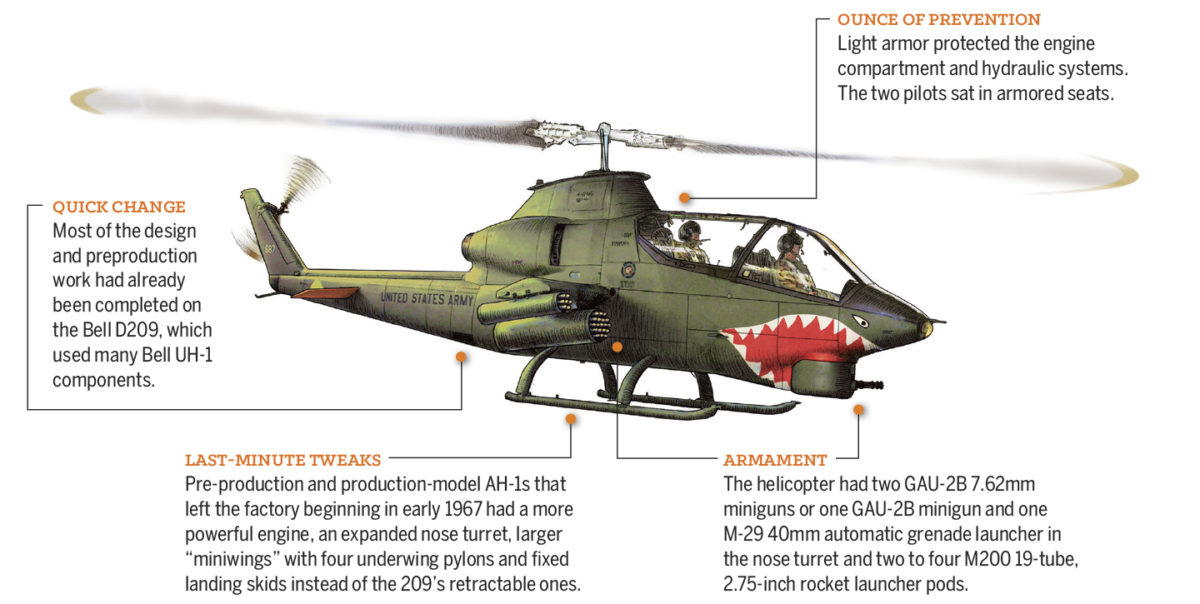A single Bell AH-1G Huey Cobra en route to Muc Hoa on Sept. 4, 1967, noticed a sampan carrying four armed Viet Cong on the waterway below. The 1st Aviation Brigade commander gave the order to attack. He achieved the Cobra’s first combat kill in Vietnam, sinking the sampan and killing its crew with rocket and machine gun fire. The day of the specifically designed attack helicopter had arrived.
The first six Cobras had landed at Bien Hoa Air Base near Saigon just five days earlier. Three were hand-built, pre-production models.
A Pentagon review board for Army aviation needs had recommended the creation of air cavalry units. Early experience in Vietnam had shown the importance of attack helicopters that could escort helicopters carrying troops and supplies and support air-assault unit landings.
Hastily adapted Bell UH-1C Iroquois gunships had firepower but lacked the engine power, agility and speed for the full range of missions envisioned for attack helicopters. The Lockheed AH-64 Cheyenne won the initial 1964 contract competition, but the Cheyenne project had a long development period and the war’s escalating requirements drove the Army to seek an interim design that could be deployed rapidly.
Bell Helicopter Co.’s D209 design, presented as a modified UH-1, was selected in August 1965, and the first prototype flew on Sept. 23, 1965. Flight tests and an Army evaluation led to modifications in the initial design. Four pre-production models were finished by late October 1966.
The Cobras, sometimes called “Snakes,” quickly proved their value in early combat missions, starting in October 1967, but the AH-1s truly cemented their reputation in the heavy fighting during the Viet Cong’s Test Offensive in early 1968.
More than 388 Cobras were in Vietnam by 1969. The copters received cockpit air conditioning after 1970 and infrared countermeasure equipment in 1971.
Army AH-1Gs served with Marine Corps units until the Marines’ twin-engine AH-1Js entered Vietnam in February 1971. Some 1,126 Cobras were built, and more than 300 were lost during the war.
The Cobras were retired from Army service in 1999, but their capacity to assimilate new avionics, engines, technologies and weapons has ensured their continued service with the Marines and America’s allies to this day.





